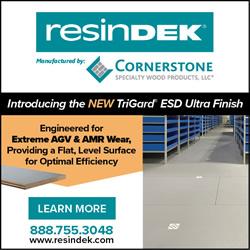Healthcare Providers Prefer Robotic Helpers
Roboticists are currently developing machines that have the potential to help patients with caregiving tasks, such as housework, feeding and walking. But before they reach the care recipients, assistive robots will first have to be accepted by healthcare providers such as nurses and nursing assistants.
Based on a Georgia Institute of Technology study, it appears that they may be welcomed with open arms depending on the tasks at hand.
More than half of healthcare providers interviewed said that if they were offered an assistant, they preferred it to be a robotic helper rather than a human. However, they don't want robots to help with everything. They were very particular about what they wanted a robot to do, and not do. Instrumental activities of daily living (IDALs), such as helping with housework and reminding patients when to take medication, were acceptable. But activities daily living (ADL) tasks, especially those involving direct, physical interactions such as bathing, getting dressed and feeding people, were considered better for human assistants.
The findings will be presented April 27- May 2 at the ACM SIGCHI Conference on Human Factors in Computing Systems in Paris, France.
"One open question was whether healthcare providers would reject the idea of robotic assistants out of fear that the robots would replace them in the workplace," said Tracy Mitzner, one of the study's leaders and the associate director of Georgia Tech's Human Factors and Aging Laboratory. "This doesn't appear to be a significant concern. In fact, the professional caregivers we interviewed viewed robots as a way to improve their jobs and the care they're able to give patients."
For instance, nurses preferred a robot assistant that could help them lift patients from a bed to a chair. They also indicated that robotic assistants could be helpful with some medical tasks such as checking vitals.
"Robots aren't being designed to eliminate people. Instead, they can help reduce physical demands and workloads," Mitzner said. "Hopefully, our study helps create guidelines for developers and facilitates deployment into the healthcare industry. It doesn't make sense to build robots that won't be accepted by the end user."
This study complements the lab's prior research that found older people are generally willing to accept help from robots. Much like the current research, their preferences depended on the task. Participants said they preferred robotic help over human help for chores such as cleaning the kitchen and doing laundry. Getting dressed and suggesting medication were tasks viewed as better suited for human assistants.
To view research by other Georgia Tech faculty members at SIGCHI, visit http://chi.gatech.edu.
Source: http://www.gatech.edu/
Featured Product

ResinDek TRIGARD ESD ULTRA FOR HIGH-TRAFFIC ROBOTIC APPLICATIONS
To maximize the productivity of an autonomous mobile robot (AMR) or automatic guided vehicle (AGV) deployment, it's critical to create the optimal environment that allows the vehicles to perform at their peak. For that reason, Cornerstone Specialty Wood Products, LLC (www.resindek.com) created the TriGard ESD Ultra finish for its ResinDek engineered flooring panels. The TriGard ESD Ultra finish is ideal for high-traffic robotic applications characterized by highly repetitive movement patterns and defined travel paths.
